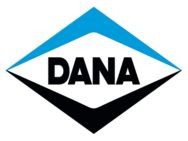Heavy industrial cranes are filled with complicated, cutting edge machines and complicated, state-of-the-art parts, but at their core cranes are very simple machines. They leverage several basic laws of physics to make extraordinarily difficult tasks like lifting enormously heavy objects easy.
Each part of a crane serves a critical function “” and a breakdown of any part can significantly delay a project and damage your company’s bottom line. So here at K&L Clutch, we’re a proud host of crane replacement parts, including crane boom extensions, crane jibs, and boom tips.
But first let’s take a look at some of the basic anatomy of your typical crane in order to better understand how they function:

Boom Crane Parts
The Boom: The boom is the most recognizable part of the crane “” the long, strong “arm” that does the heavy lifting and makes challenging projects doable. Some cranes feature long fixed booms, while others use telescopic booms that add a greater degree of operational flexibility to the equipment.
The Jib: This lattice-like structure frees up the boom to extend fully and provide maximum lift range.
The Counterweights: Counterweights keep cranes from becoming unbalanced while hoisting heavy loads. You can usually spot them near the cab’s exterior. For example, the auto cranes on our mobile support trucks can be tasked with enormous loads of up to 5,000 pounds.
The Rotex Gear: This set of equipment allows the crane to rotate its apparatus “” a critical function that enables the crane to move heavy objects to awkward or difficult-to-reach positions. Hook rollers can also be used to achieve this rotational function.
To learn more about crane anatomy, take a look at our complete catalog of industrial replacement parts, or contact us for more information.


























Ohh.
Really this is good informative blog.
Keep it up…
i appreciate his web site.this is really a good place to learn the crane anatomy. and thanx to editor 🙂